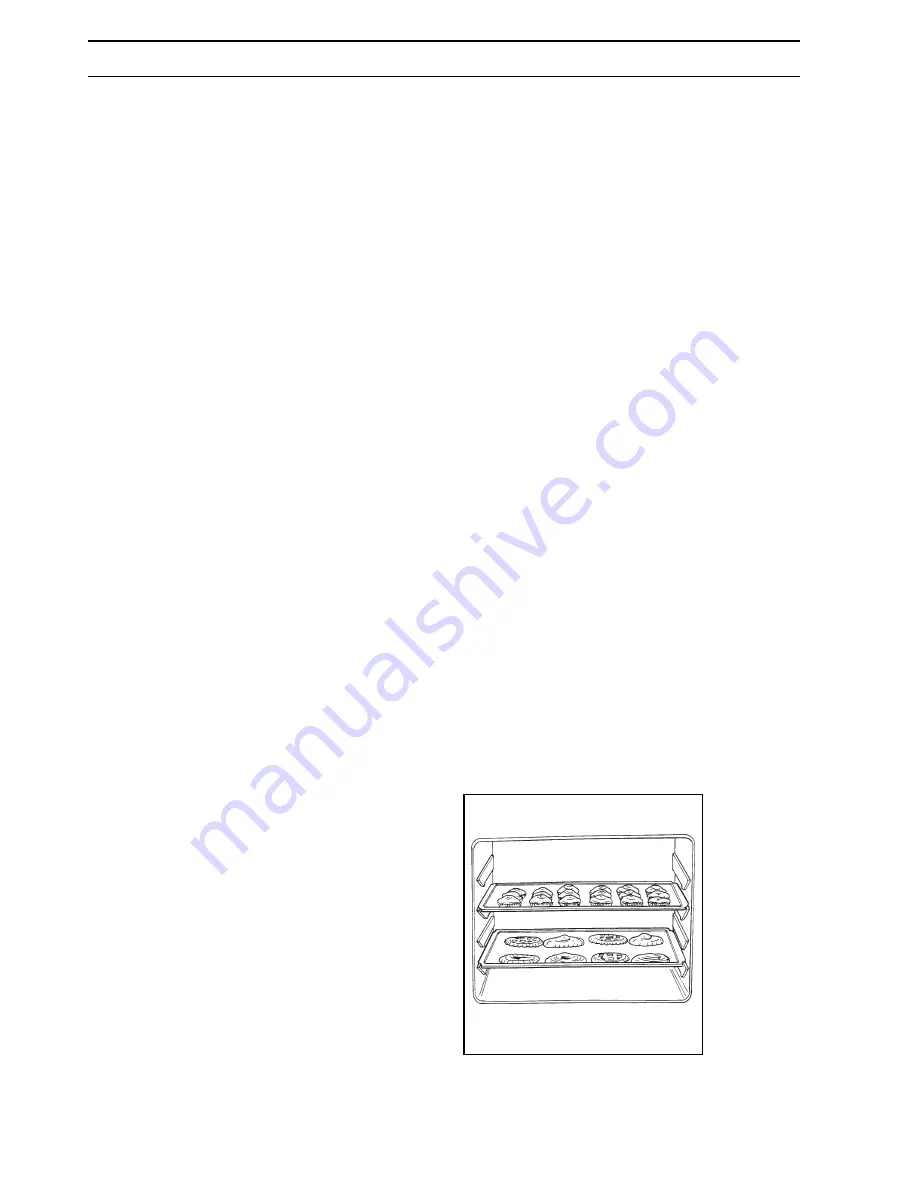
73
SOME ADVICE FOR THE USE OF YOUR OVEN
Traditional cooking
Heat originates from top and bottom, dishes should
preferably be placed in the middle. If cooking requires
more heat from the bottom or the top, use the upper or
lower level.
Convection cooking
Heat is transmitted to dishes by hot air forcibly
circulated inside the oven by a fan placed at the back
of the oven. By this method, heat is quickly and evenly
circulated throughout the oven, permitting several
different dishes to be cooked at the same time on
different levels.
With this cooking method, through the elimination of
humidity in the air and a drier environment, smells and
tastes are not given off and do not mix with those of
other dishes.
Thanks to this possibility of cooking on several levels,
you can cook up to three different dishes at the same
time, to be consumed immediately or frozen. You can
also cook on only one level. In this case, it is advisable
to place the dish on the lower level for better cooking
control.
This oven is particularly suitable for de-freezing rapidly,
sterilizing preserves, homemade jams and, finally, for
drying mushrooms and fruit.
Cooking in the multi-function oven
This type of oven permits different types of cooking:
traditional, convection, fanned heat and grilling;
cooking can therefore be optimized.
For the preparation of cakes
Pre-heat the oven, unless indicated differently, for at
least 10 minutes before use. do not open the oven
door when cooking dishes which must raise (e.g.
raised pastries and soufflés); the jet of cold air would
block the raising process.
To check if cakes are cooked, insert a toothpick into
the mixture; if it comes out clean the cake is ready.
Wait until at least 3/4 of the cooking time has passed
before doing this check.
As a general rule remember that:
A dish which is well-cooked on the outside but not
sufficiently cooked inside, would have required a longer
cooking time but lower temperature. On the contrary,
a “dry” texture would have required a shorter cooking
time but higher temperature (Fig. 14).
For the preparation of meat
Meat to the cooked in the oven should weigh at least 1
kilo to avoid its becoming too dry. If you want roasts
with a good colour, use very little oil. If the piece is
lean, use a little oil and butter. Butter or oil are
unnecessary if the piece has a strip of fat on top. If the
piece has a strip of fat on one side only, put it in the
oven with this side upwards; when melting the fat will
grease the lower side sufficiently.
Red meat should be removed from the fridge one hour
before cooking otherwise the sudden change of tem-
perature could cause it to become tough. A roast,
especially if of red meat, must not be salted at the
beginning of cooking as salt causes juices and blood
to seep out of the meat, thus preventing the formation
o a well-browned crust.
It is advisable to salt the outside the of the meat after
just over half the cooking time.
Place the roast in the oven in a dish having a low rim;
a deep dish acts as a shield and prevents heat from
circulating.
Meat can be placed on an ovenproof dish or directly
on the grill, under which the dripping pan should be
inserted to collect juice. Ingredients for gravy should
only be put in the dish immediately if cooking time is
brief, otherwise they should be added during the last
half hour.
Begin cooking rare meat at a high temperature,
reducing the temperature to finish cooking the inside.
The cooking temperature for white meat can be mode-
rate throughout.
The degree of cooking can be checked by pressing the
meat with a fork; if it does not give the meat is cooked.
At the end of cooking it is advisable to wait at least 15
minutes before cutting the meat in order that the juices
are not lost. Before serving plates can be kept warm
in the oven regulated at minimum temperature.
Fig. 14
FO 0062
Summary of Contents for ZC 564 E
Page 3: ...62 ...







































